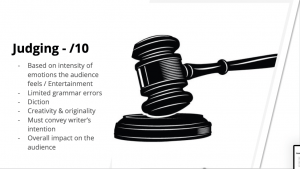Q) Explain how Churchill uses language to establish a particular character’s identity, class, or social status. First, decide on a character, then analyze the specific language selected by Churchill for this particular character. Include direct quotes and dramatic techniques. Remember to consider both representation and identity in your response. Respond in paragraph form.
The character I have chosen is Dull Gret. In Top Girls, Churchill uses language as an indicator of class status and how women were oppressed at that time. Churchill makes Dull Great a stark contrast to everyone else at the dinner table by making her the quiet and silent one who doesn’t talk much until the very end. When Gret does eventually decide to join the conversation, the way her narrative changes is striking. I think the reason Churchill does this is to show how women at that time had a lot to say and a lot of emotion that they wanted to express but were told to keep quiet and not talk just like how Dull Gret was in the beginning. Talking about her main speech at the end where Gret describes her struggles, I think that Churchill wants to portray how Gret had gone “into hell” and fight the “devils” (devils being men in this scenario) to fight against this system where men were dominating. Churchill shows how women had been constructed to have a particular ‘voice’ or ‘identity’ and therefore uses Gret to show how women tried to fight back against this. Through the story that Gret tells, Churchill wants to show that even though they were all going through horrific times the women were able to fight the “devils” (men) and also beat them.




